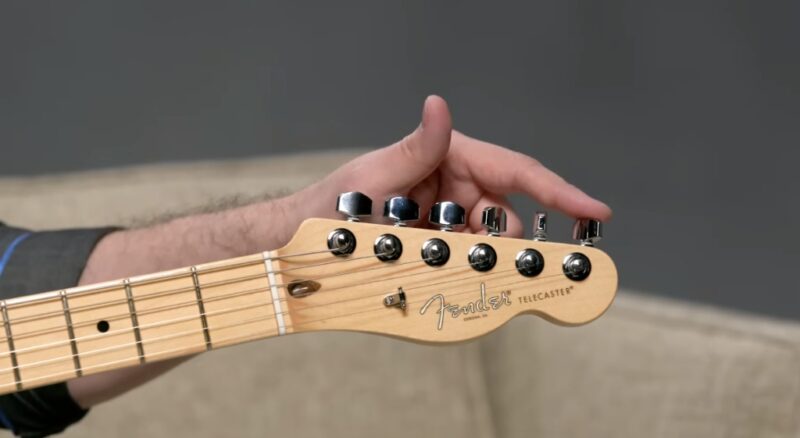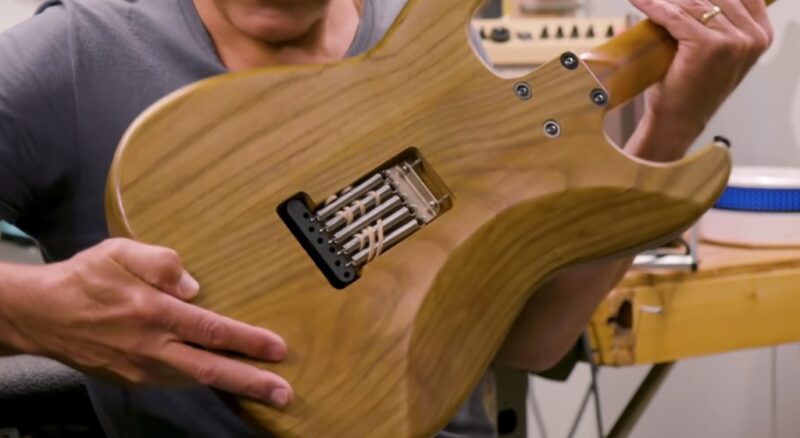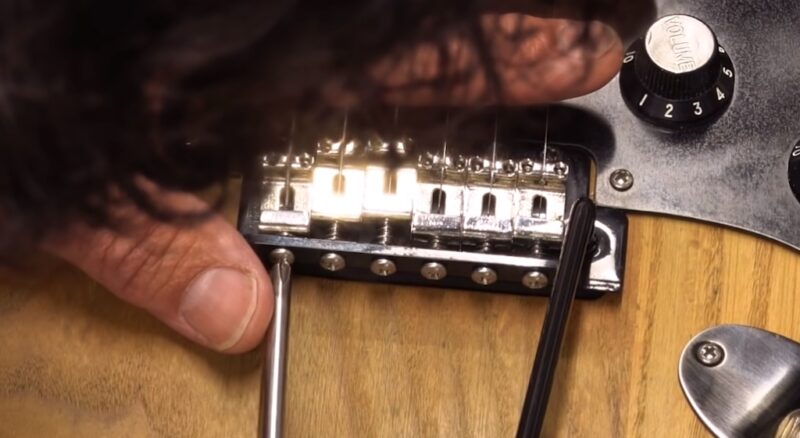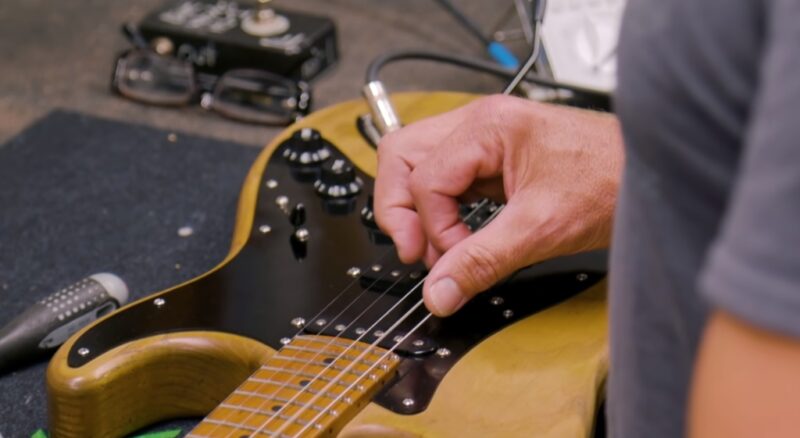Tuning an electric guitar is the cornerstone of creating music that resonates.
Whether you’re strumming your first chords or shredding intricate solos, a properly tuned guitar sets the stage for every note to ring true.
Achieving precise tuning not only enhances the sound but also improves your overall playing experience.
Let’s break down the essentials to help you master this vital skill, ensuring your guitar sings with clarity and precision.
The Importance of Proper Tuning

Every guitarist knows that the magic of their instrument lies in how it sounds, and tuning plays a central role in achieving that magic.
Proper tuning isn’t just about hitting the right notes; it’s about creating a harmonious connection between your guitar and the music you want to express.
Mastering this fundamental skill ensures that your instrument performs at its best, whether you’re practicing alone or performing for an audience.
Why It Matters?
Every musical instrument sounds its best when it’s in tune.
For electric guitars, proper tuning ensures that the chords and notes you play resonate harmoniously, creating a pleasing auditory experience for both the player and the listener. It holds the same importance as learning chords.
In fact, tuning is just as critical to a guitarist’s craft as learning to play chords or scales. Without it, even the most skilled player’s performance can sound off-key and lackluster.
The Impact of Playing?
A guitar that’s out of tune can hinder your progress as a musician. It can distort your perception of notes and chords, leading to incorrect finger placements and hindering your ability to progress.
Over time, playing on a guitar that isn’t tuned correctly can undermine your confidence and make practice sessions frustrating.
By ensuring your guitar is always tuned to perfection, you create a solid musical foundation, allowing your skills and creativity to flourish without limitations.
Standard Tuning
Tuning is the foundation of playing the guitar, and for most players, standard tuning is the starting point.
It’s simple, versatile, and the format on which countless songs are based. Mastering standard tuning allows you to play everything from basic chords to complex solos with precision.
The Basics
In standard tuning, a six-string electric guitar is tuned to E-A-D-G-B-e. This sequence starts with the thickest string, the 6th string (low E), and progresses to the thinnest, the 1st string (high e).
Each of these strings represents a specific pitch that forms the foundation of countless musical styles.
Getting familiar with this sequence is a crucial first step in developing your ear and your playing technique.
Tuning to the Right Pitch
Each string needs to be tuned to its designated pitch to ensure your guitar produces the correct tones. An electronic tuner is the easiest and most accurate way to achieve this. Beginners should spend time not only tuning their guitar but also listening to the sound of each correctly tuned string.
The practice helps train your ear to recognize when a string is in or out of tune. A well-tuned guitar will ensure every chord and melody sounds clear and precise, making your playing much more enjoyable.
Tools
Having the right tools is essential for tuning your electric guitar effectively. While it’s possible to tune by ear, using reliable equipment ensures accuracy and consistency. Modern tools make the process simpler, allowing musicians of all levels to achieve a perfectly tuned instrument with minimal effort.
Among the most popular and accessible options are electronic tuners, which have become indispensable for guitar players everywhere.
Electronic Tuners
Electronic tuners are designed to detect the pitch of a played string and indicate how close it is to the desired note. These tools are highly accurate, user-friendly, and available in multiple formats, such as pedal tuners for stage use, clip-on tuners for quick adjustments, and app-based tuners for convenience on the go.
They’re perfect for ensuring your guitar sounds its best, regardless of your skill level or setting.
How to Use Them?
Using an electronic tuner is simple and effective. Start by playing any string on your guitar. The tuner will display the note being played and show whether it is sharp (too high), flat (too low), or perfectly in tune.
Adjust the corresponding tuning peg slowly and carefully until the tuner confirms the string is at the correct pitch. Repeat this process for each string, ensuring the entire guitar is in tune.
By mastering the use of an electronic tuner, you’ll always have a reliable way to keep your guitar sounding crisp and harmonious, no matter where or when you play.
Tuning by Ear

Tuning by ear is a timeless skill that connects you to your instrument in a more intuitive way. It teaches you to rely on your sense of pitch and improves your overall musicality.
While electronic tuners are convenient, knowing how to tune by ear is essential for times when technology isn’t available or when you want to hone your aural skills.
With practice, this method becomes a quick and reliable way to keep your guitar sounding great.
The Natural Approach
Tuning by ear involves matching the pitch of your strings to a reference note. This approach requires focus and a good ear for pitch but offers an invaluable connection to your instrument.
Steps to Follow:
- Play a reference note, such as the open A string or a tuning fork.
- Pluck the string you want to tune.
- Adjust the tuning peg until the pitch of the string matches the reference note.
This technique may take some practice, but it sharpens your ability to recognize subtle differences in pitch.
Using Harmonics
Harmonics offer a precise and efficient way to tune your guitar by ear. These overtones are produced by lightly touching a vibrating string at specific points along its length. When used correctly, harmonics can help you achieve highly accurate tuning.
The Technique:
- Play a harmonic at the 5th fret of the low E string.
- Play a harmonic at the 7th fret of the A string.
- Listen closely, these two notes should sound identical.
- If the pitches don’t match, adjust the A string until the harmonics align.
Repeat this process across all the strings, pairing the 5th-fret harmonic of one string with the 7th-fret harmonic of the next. This method ensures consistency across the strings and helps you fine-tune your guitar with confidence.
Common Challenges and Solutions
Keeping a guitar in perfect tune can feel like an ongoing battle, especially when external factors or minor oversights come into play.
Understanding the common challenges that disrupt tuning and knowing how to address them will not only improve your sound but also make your instrument more reliable.
Below are some of the most frequent tuning issues and practical solutions to keep your guitar performing at its best.
String Age
As strings age, they lose their elasticity, making them harder to tune and more likely to produce a dull, lifeless tone. Worn strings are also prone to breaking at the most inconvenient times. The solution is straightforward: change your strings regularly.
If you’re a frequent player, this might mean replacing them once a month. For less frequent use, swapping them every few months should suffice. Fresh strings not only sound better but also hold their tuning more consistently.
Temperature and Humidity
Guitars, especially those made of wood, are highly sensitive to environmental changes. Shifts in temperature and humidity can cause the wood to expand or contract, which directly impacts string tension and tuning stability.
How to Counteract:
- Store your guitar in a stable environment, avoiding direct sunlight, heaters, or air conditioners.
- Use a humidifier or dehumidifier in cases of extreme weather to keep the guitar’s environment balanced.
- Invest in a quality guitar case that offers some insulation against temperature swings.
By maintaining a consistent environment, you can significantly reduce the impact of weather changes on your instrument’s tuning.
Playing Technique
Aggressive playing styles, such as frequent string bending, heavy strumming, or using thick picks, can quickly knock strings out of tune. Songs that demand intense techniques might require retuning after just a few minutes of playing.
To mitigate this, develop the habit of checking your tuning frequently during practice or performances. Over time, you’ll get a feel for how your playing style impacts tuning and can adjust accordingly.
Advanced Techniques

Mastering advanced guitar techniques allows you to unlock new sonic possibilities and refine your overall sound. By experimenting with alternate tunings and perfecting intonation, you can push your guitar-playing skills to new heights.
These techniques not only broaden your musical versatility but also ensure your instrument delivers the precise tones you’re aiming for.
Alternate Tunings
While standard tuning remains the foundation for most guitarists, exploring alternate tunings can open doors to fresh creative opportunities. These tunings change the relationship between the strings, making it easier to play certain chords, riffs, or melodies tailored to specific genres or styles.
Popular alternate tunings include:
- Drop D (D-A-D-G-B-E): Ideal for heavy rock and metal, offering easier access to power chords and a fuller low end.
- Open G (D-G-D-G-B-D): Common in blues and slide guitar, this tuning produces a resonant open chord when played without fretting.
- DADGAD (D-A-D-G-A-D): Frequently used in Celtic and folk music, it provides a distinct drone-like quality that enhances fingerstyle and melodic playing.
Experimenting with these tunings can inspire new compositions and make familiar songs feel entirely new.
Fine-Tuning with Intonation
Intonation is crucial for ensuring your guitar sounds in tune across the entire fretboard. Even if the open strings are tuned correctly, notes played higher up may sound off if the intonation is not adjusted properly.
To correct intonation issues, you’ll need to adjust the bridge saddles. This process involves:
- Tuning the Open String: Ensure the string is perfectly in tune.
- Checking the 12th Fret: Play the string at the 12th fret and compare its pitch to the open string.
- If the fretted note is sharp, move the saddle back to lengthen the string.
- If it’s flat, move the saddle forward to shorten the string.
- Rechecking Both Notes: Repeat the process until the open string and the 12th fret are perfectly in tune.
Fine-tuning intonation may take some time, but it’s a worthwhile effort to achieve consistent tuning across all frets.
FAQs
How often should I tune my electric guitar?
Ideally, you should check the tuning of your electric guitar every time you play. Factors like temperature changes, humidity, and regular playing can cause strings to go out of tune. Regular tuning ensures optimal sound quality and performance.
Can I use acoustic guitar tuners for my electric guitar?
Yes, most tuners designed for acoustic guitars can also be used for electric guitars. However, electric guitar-specific tuners might offer features like being able to tune with the guitar plugged in, which can be beneficial in noisy environments.
Why do new strings go out of tune faster?
New strings need a period of “stretching” or “settling” when first installed. As they adjust to the tension and the guitar’s neck, they might go out of tune more frequently. It’s recommended to gently stretch new strings and retune them several times until they stabilize.
Is it harmful to leave my electric guitar in an alternate tuning for extended periods?
Not necessarily. However, drastically changing the tension on the neck (by using much lower or higher tunings) for extended periods can affect the guitar’s setup. If you frequently use alternate tunings, it might be worth having a dedicated guitar for that purpose or regularly checking the guitar’s setup.
Can I tune my electric guitar without an amplifier?
Absolutely! While an amplifier can make the sound clearer and louder, it’s not necessary for tuning. Clip-on tuners, for instance, pick up vibrations directly from the guitar, allowing for accurate tuning even without amplification.
Last Words

Mastering the art of tuning your electric guitar is an essential step in developing your skills as a guitarist.
By ensuring your instrument is properly tuned, you set yourself up for clearer tones, more precise playing, and an overall better experience.
With consistent practice and attention to detail, tuning will become second nature, allowing you to focus entirely on your music.
Keep your tuner handy, trust your ear, and enjoy every note you play.
Related Posts:
- A Comprehensive Guide to Mastering the 8 String Guitar
- How Many Frets Are Standard on an Electric Guitar?
- 10 Upgrades That Make a Cheap Electric Guitar Sound…
- How Do You Play Classico Tenacious D on Guitar? -…
- How to Tune Your Guitar Strings - A Step-by-Step Guide
- How to Tune a 12-String Guitar - The Ultimate Guide











